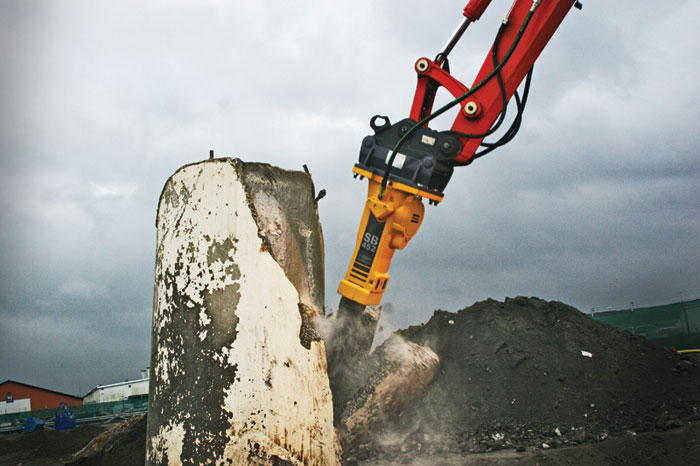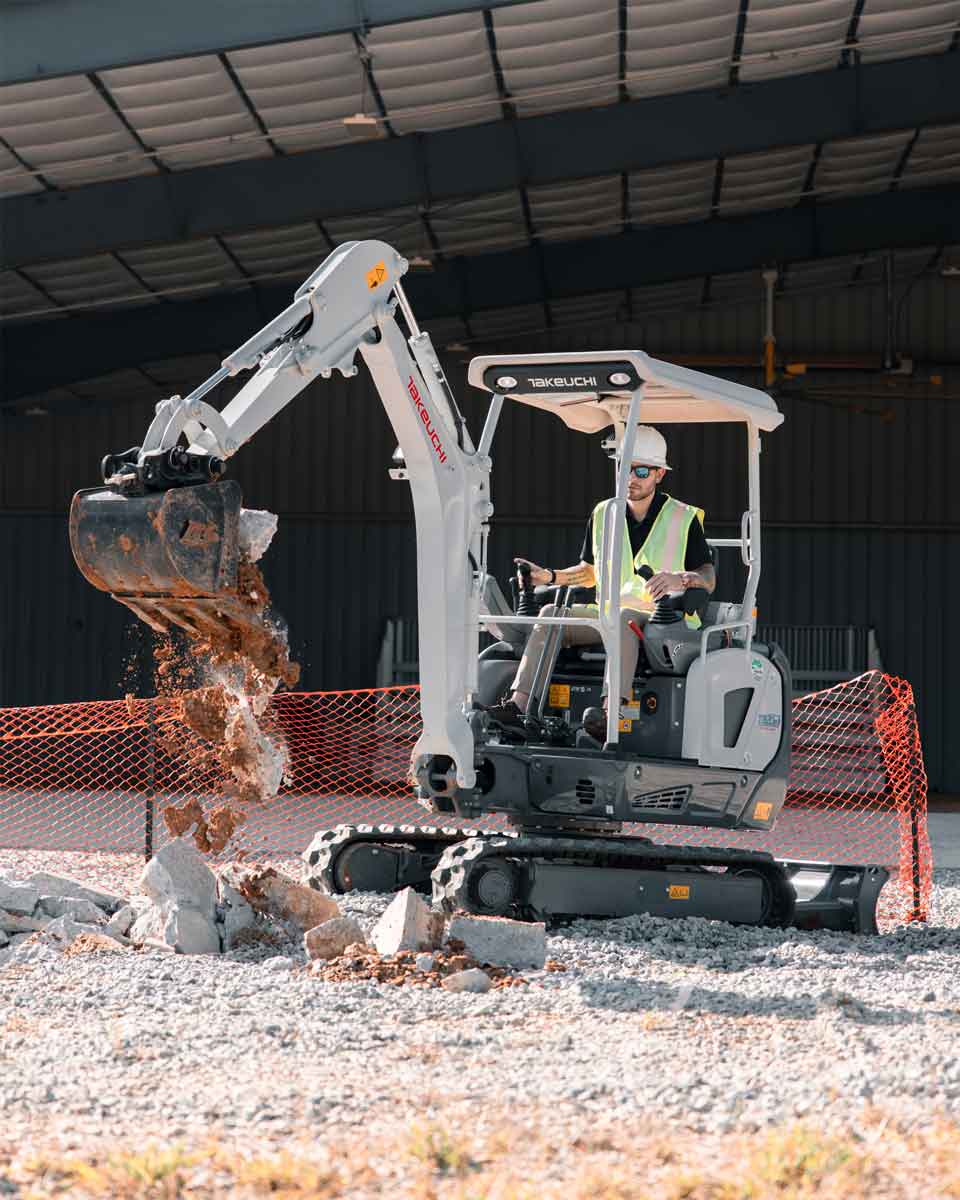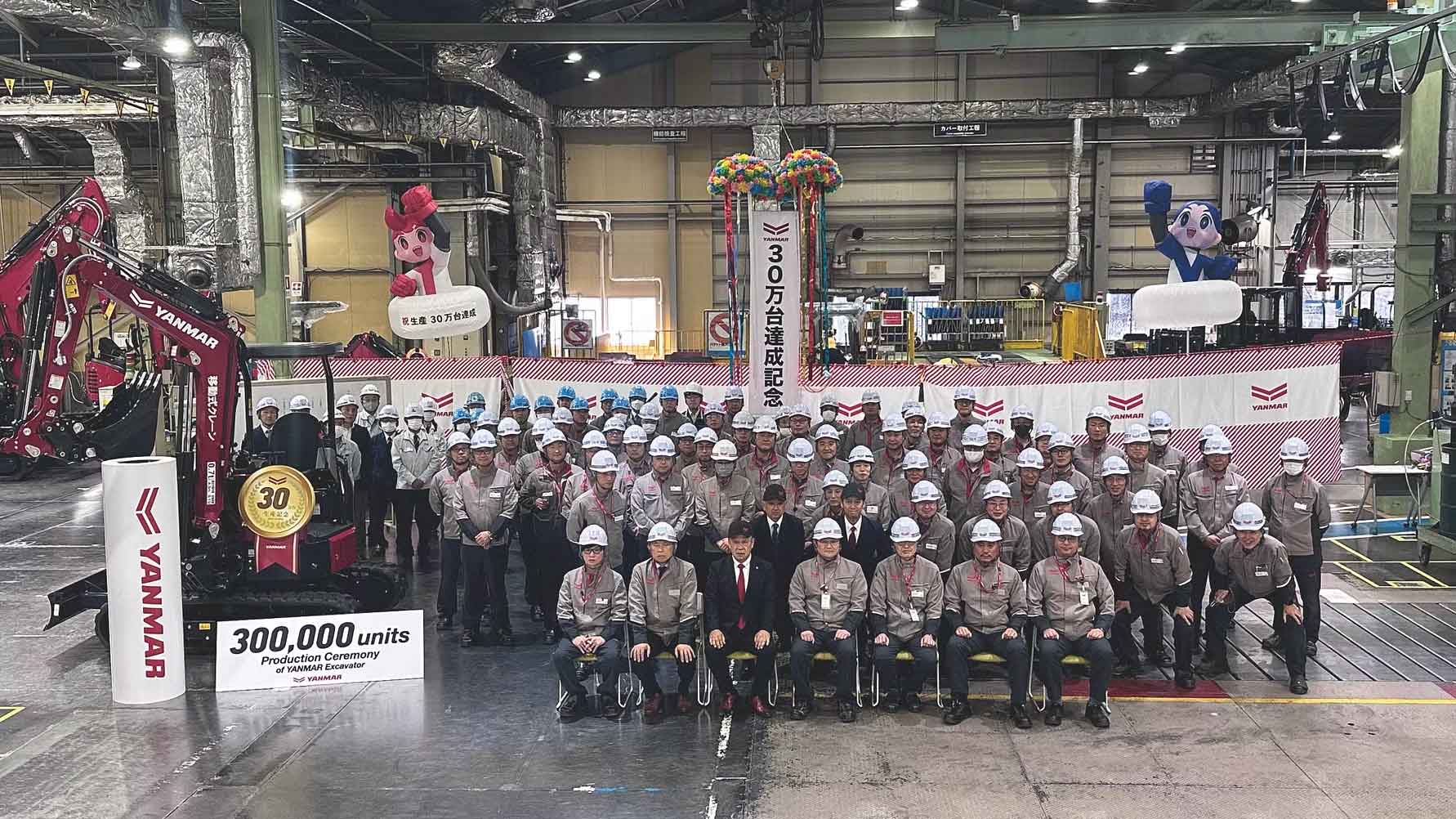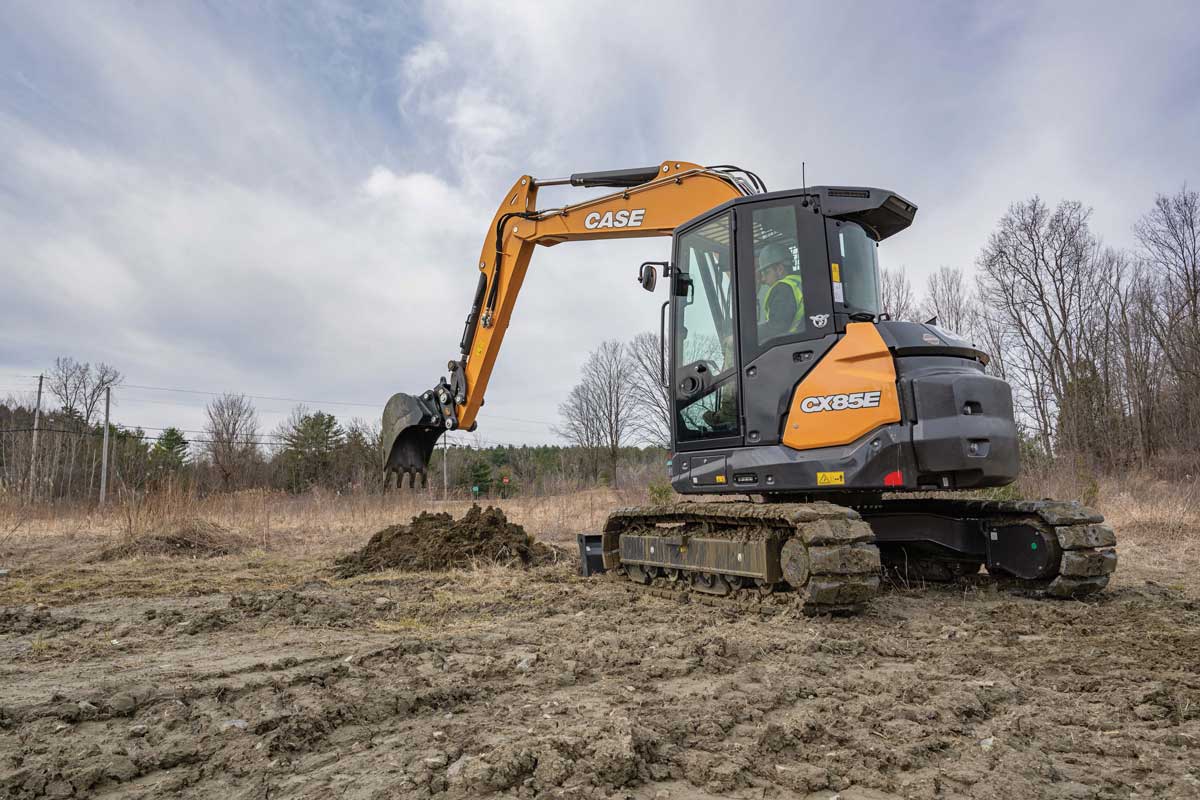The Mini Ex Market
Throughout Asia and Europe, construction equipment tends to shrink with metropolitan development as jobsites become increasingly confined. Even U.S. contractors are trending toward machines they once regarded solely as foreign novelties — machines like mini excavators (also called compact excavators). As a lead product development specialist for Atlas Copco hydraulic attachments, Keith Becker has a unique vantage point overlooking the slowly but surely evolving U.S. mini excavator market. On any given day, Becker’s time is devoted to providing product information to distributors and channel managers, assisting with product demonstrations and matching equipment to applications. Becker works with the full range of equipment, outfitting them with hydraulic attachments that range from the lightest and smallest to the one of the world’s largest breakers at 22,500 lbs.
Defining the Mini Market
Becker said profitability has always been about getting the most productivity from the smallest equipment that can get the work done. “Everyone knows that. But there’s a lot of opinion over what small and mini means,” he says.

Becker explained it depends primarily on what a carrier’s weight and hydraulics can support. While excavators under 20,000 lbs are considered by some to be mini (excavators about the same size as all but the largest of backhoes), there is a distinctly powerful, easily transportable class of excavators below 10,000 lbs designed for work in extremely confined spaces. “Anything you used to do with a backhoe, the mini excavator does faster with less fuel and labor cost,” says Becker. A 7,000-lb mini excavator not only can get into and work in places a backhoe can’t, it can easily be towed anywhere a three-quarter-ton pickup can go.
For those customers who look primarily at initial cost, Becker said to consider that for the price of a typical backhoe, a contractor can have two mini excavators, or a mini excavator and a skid steer: “Instead of tying up one piece of equipment you’re only using half of, you can be working two pieces of equipment at the same time,” says Becker. With “zero tail swing,” most mini excavators can spin a full 360 degrees without any part of the machine’s body exceeding its track width.
“You usually think of tight places when you think of mini excavators, not on road construction projects in the country,” explains Becker. “But they’re there, working right up against barricades and cones, right next to traffic. It’s crazy how close they can get and still be working.”
Production Match-Up
To the owner-operator or utility crew, a mini excavator is a primary production machine “just like the big iron of those larger companies,” Becker says. Such a contractor will be keenly interested in the efficiency he can achieve by matching an attachment to the job he’s doing. That’s when Becker can help provide customer education.
“We suggest fuel expense as a measure of productivity,” he continues. “The contractor knows exactly what he pays for fuel. He writes a check out every day for it. He can compare how much work he got done to what he spent on fuel.”
As a former mechanic himself, Becker says he personally would choose a mini excavator that can easily be serviced and repaired in the field. “Pick any of the major players and you’ll be fine. They’re all very price-competitive and have comparable features.”
Which model? “I usually tell customers to make their choice based on comfort. If you’re over 6-ft tall and 250 lbs, you won’t want to sit in something smaller than an airplane seat with the toggles halfway up your arms and legs cramped together all day, when another one would be like sitting in your living room recliner.”
For attachments, Becker said, “We want to give them the best power-to-weight ratio, but it’s not just about putting the biggest tool they can carry on it. Carrier weight might handle a bigger attachment than its hydraulic characteristics can support. We consider the customer’s economics, asking: What are you going to do with it and how often? Do you really need the largest breaker you can fit on the machine, or will a smaller one get the job done? And what are you going to be doing with it next month, next year? Sometimes a tool opens up new avenues. So we might be expanding a customer’s vision, or we might talk them out of the biggest tool for the job if it’s not a good production match-up for them.”
Precision Attachments
Becker said operating mini excavators and their attachments can be fun and easy to learn. His own two boys, 13 and 16 years old, are adept at it. But he also makes a distinction between an operator and a “lever-puller.”
“Guys say ‘Yeah, I can operate it,’” says Becker. “But can they do precision work next to a foundation or gas line without damaging it? It’s mostly about seat time.”

Becker said he expects it won’t be long before this country starts seeing the more stringent regulations for demolition and construction in congested metropolitan areas already in place in Europe regarding health, safety and the environment. Not to worry: Most of the attachments his company makes already address these issues.
Even while improving HSE statistics, Becker said the primary goal for attachment design remains the same: Provide the most productive power-to-weight ratio and provide it in the same jobsite conditions that larger attachments work in. So materials and design have also evolved. Becker said his breakers all feature solid bodies that have no tension bolts to break, and to prevent any chance of damage from excessive flow and pressure, as might be encountered in changing from one carrier to another, the breakers all have an integral hydraulic relief valve.
Other attachments, such as pulverizers, cutters, grapples, and compactors, maintain the same design focus on optimizing power-to-weight ratios, featuring highly durable materials in their parts and housing, quick cycle times and field-serviceability. But because the attachments are smaller, engineers have tweaked any feature that yields greater capacity. The clamshell design of the grapple is one example. Combi Cutters also have wider jaw openings to increase volume per bite. Scrap cutters maintain a high cutting force along their entire blade length. Inch for inch, attachments for mini excavators hold their own on-site at demolition and construction projects.
Joe Bradfield is senior writer for Ellenbecker Communications, based in Round Lake, Minn.




